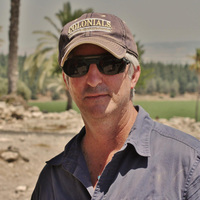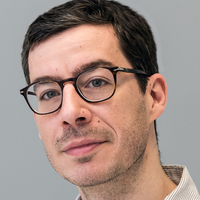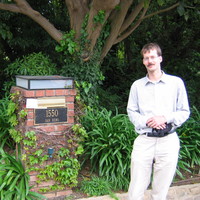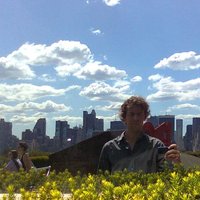Papers by Douglas A Knight
Includes descriptive metadata provided by producer in MP3 file: "The Rev. Edward A. ... more Includes descriptive metadata provided by producer in MP3 file: "The Rev. Edward A. Malloy, president emeritus of the University of Notre Dame and a member of the Vanderbilt University Board of Trust, spoke during a Oct. 27 [2005] seminar in Buttrick Hall on science, religion ...
Vetus Testamentum, 1987
Philadelphiaxxvii, 516 p.: bibl., index; 24 c
Journal of the American Oriental Society, Apr 1, 1979
Philadelphiaxiv, 336 p.; 24 c
Journal of Biblical Literature, Jun 1, 1975
Includes descriptive metadata provided by producer in MP3 file: "Divinity School - Podcast -... more Includes descriptive metadata provided by producer in MP3 file: "Divinity School - Podcast - Doug Knight on law, power, and justice in Ancient Israel." In this podcast, Chris Benda, theological librarian at Vanderbilt Divinity Library, interviews Professor Doug Knight about his book Law, Power, and Justice in Ancient Israel.
The Anchor Yale Bible Dictionary, 1992
Proceedings of the American Philosophical Society: Held at Philadelphia for Promoting Useful Knowledge, 2008
Journal of the American Oriental Society, Apr 1, 2000
Page 1. RI H ANE The Canonization of the Hebrew Scriptures Philip R. Davies Library of Ancient Is... more Page 1. RI H ANE The Canonization of the Hebrew Scriptures Philip R. Davies Library of Ancient Israel Douglas A. Knight, Editor Page 2. Page 3. Scribes and Schools This One KTCT-AGD-6SYP Page 4. LIBRARY OF ANCIENT ISRAEL Douglas A. Knight, General Editor Page 5. ...

The settings in which by far the greatest population of ancient Israel was located are also the c... more The settings in which by far the greatest population of ancient Israel was located are also the contexts about which we are least informed. That gap in our knowledge is being closed somewhat as archaeologists and historians attend increasingly to life in the numerous small villages, but too little remains from most of such settlements to cast significant light on their inhabitants' lives, circumstances, perspectives, and ideologies. 1 Their relative poverty meant that they could generally not afford to build with the durable materials employed in monumental urban structures or in the houses of the elite. As evidence of village layout, housing, everyday pottery pieces, tools, storage areas, and more comes to light, our picture fills out with details that provide us with a better sense of their terms of living than we might have expected. Nonetheless, there will always be distinct limits to the extent and depth of how much we can know about these 1 Among recent studies describing how details of daily living can be drawn from the archaeological record and other sources,
I N DISCUSSING Old Testament ethics, we are not faced with the usual problem of trying to pick ou... more I N DISCUSSING Old Testament ethics, we are not faced with the usual problem of trying to pick out a consensus from a welter of diverging viewpoints and methods. If only there were such an abundance of careful studies on biblical ethics, we would find ourselves in the luxurious position of highlighting the helpful approaches, discarding those which are problematic, and generally drawing together the "assured results" of scholarship. When one considers how often people invoke biblical teachings in matters of morality, it seems that biblical ethics would be an inviting terrain for scholars to explore. Yet there is a perplexing scarcity of comprehensive, systematic studies of the material. Several general treatments of Old Testament ethics appeared around the beginning of this century
Scholars' Press eBooks, 1995

Journal of Biblical Literature, Sep 1, 1988
This book elaborates upon a beautiful insight of T. S. Eliot, expressed in the couplet: "There is... more This book elaborates upon a beautiful insight of T. S. Eliot, expressed in the couplet: "There is no life that is not in community, And no community not lived in praise of God." In pursuing this rich theme throughout the story of God's grace-filled dealing with ancient Israel and with the new community of faith which proclaimed "Jesus is Lord," Hanson of Harvard has given us an attractive interpretive principle for bonding OT and NT. And the quest for a unifying structural principle has been realized without falling into the trap of stressing the uniqueness of Christianity to the point of overlooking its roots in the ancient heritage or, conversely, of emphasizing continuity to the point of obscuring the radical newness of Christianity. A delicate balance must be preserved, I believe, between the traditional and the creative; H. has done this and, perhaps more importantly, has established a trajectory from the biblical ideal of community to our contemporary concerns. To put this in his concluding words: "If we open our eyes to the community of faith that took shape in biblical times, the way in which we look on the communities of faith of which we are a part will be radically transformed" (546). From Abraham to the present as well as to the indeterminate future we are a people called. The great theological syntheses of Eichrodt and von Rad come to mind, but H. is not offering us a theology of the OT on such a grand scale. He aims at something less, and more. On a narrower gauge he selects one theme, that of community, as a unifying thread guiding his treatment of the biblical writings. This community is defined by a triad: righteousness, compassion, and worship. These three elements, of course, are not static; they undergo lively development as Israel responded to a God who was perceived as active in her history. Yahweh was a righteous God who had created order out of chaos and then bound a people to Himself in a covenant marked by a burning concern for the rights of its members. Decalogue and Holiness Code are concrete examples. But legislation is not enough. A standard of justice must be tempered by the warmth of compassion which reaches out to the weak, the poor, and the marginalized, offering them a share in God's peace. Finally, H. shows how the righteousness and compassion of God become vibrantly 735 736 THEOLOGICAL STUDIES alive in Israel's worship. In the cultic celebration of Yahweh's gracious acts the community transformed the potentially disruptive tension between the first two qualities into a generative force capable of molding a people into an agent of God's purpose in this world (74). But the vision of a people called does not stop with the OT. In chaps. 13 and 14 the classical triadic pattern is reaffirmed in the response of Jesus to what he interpreted as the new initiative of God in establishing the kingdom. A final chapter reflects upon the abiding value of recapturing a faith-inspired vision of community which worships a righteous and compassionate God. In passing let me note that anyone studying the recent pastoral letter of the U.S. bishops on the economy will find here illuminating biblical material under the headings of "righteousness," "compassion," and "peace." I regret that my praise of this remarkably rich and well-indexed synthesis cannot be unqualified. In my review copy I have marked in red over 160 typographical errors, a distressing departure from the high standards we have come to expect from Harper & Row.
Interpretation, Mar 19, 2014
The texts in the Hebrew Bible dealing with old age and the elderly should be understood in light ... more The texts in the Hebrew Bible dealing with old age and the elderly should be understood in light of multiple contexts-the socioeconomic settings of real life in ancient Israel; the material indications that life expectancy must have hovered around age 40, which was probably considered elderly and suffering the ailments of old age; and the literature from surrounding cultures that depicts the afflictions of old age.

Religion, Apr 1, 2002
The period from 1968 through 1972 marked a turning point in the second half of the twentieth cent... more The period from 1968 through 1972 marked a turning point in the second half of the twentieth century as social and intellectual upheavals spread throughout Europe and North America. I experienced it from the somewhat unusual vantage point of a foreigner in Germany engaged in graduate studies and confronted with impressive academic and cultural institutions with which I was not familiar. In October 1968 I arrived in Göttingen to begin doctoral studies in Old Testament at Georg-August-Universität. At the time I knew little about this venerable institution other than the roster of distinguished biblical and other scholars since its founding in 1737. Even with my earlier studies in Oslo, I possessed little more than vague generalities about the German academic scene and did not have a clear sense of the distinctive relationship there among Church, state and university. Upon completion of my degree programme four years later, I returned to the United States a much different person-not only with the training and credentials needed for a career in teaching and research but also with a new understanding of political, cultural and ecclesiastical as well as academic issues. As will be apparent in this essay, my 'American' notions of church/state relations and academic freedom still persist, reinforced in line with the deep-seated challenges of the '60s and '70s. Considering matters now from the remove of three decades, I cannot help but think that those same cultural and institutional forces, particularly in their German form, set the stage for the conflict that subsequently engulfed my doctoral colleague in Göttingen of that period, Gerd Lüdemann. At the base of the student unrest, both in Europe and in the U.S., was a fundamental questioning of authority-of governments over citizens, of the military-industrial establishment over political policies, of the First World over the Third World, of one race over others, of males over females, of parents over children, of traditional social norms over the new generation's choices. No social institution was above the suspicion of those who became known as 'the '60s generation' or-in German jargon, singling out the year of the beginning-'die Achtundsechziger'. In Germany a special element was added: the parents and grandparents of the students were responsible for the greatest war and the most horrible, appalling massacre of modern times, likely of all times. As I observed in innumerable conversations and situations, the German students felt branded and fated: they were treated with suspicion and even hostility as they traveled in other countries; they often regarded their parents and their social institutions as being morally bankrupt; and they worried that the traits that characterised their predecessors might reside, if not in their genes, then in the cultural air they were breathing-the same atmosphere that could at once produce a Mozart and a Mengele, a Goethe and a Goebbels, a Dürer and a Führer. Much around them was to be discredited. Open criticism and intellectual honesty provided the best hope for escape from the cycle. Small wonder that 1969 brought the stunning loss of power by the Christian Democratic Party as the Social Democratic Party, in coalition with the Free Democrats, gained control of the government for the first time since the country's founding in 1949 and placed Willy Brandt in the chancellor's office. A popular student poster lampooned Franz-Josef Strauß, a leader of the opposition, by citing apocalyptic words attributed
Scholars' Press eBooks, 1989











Uploads
Papers by Douglas A Knight